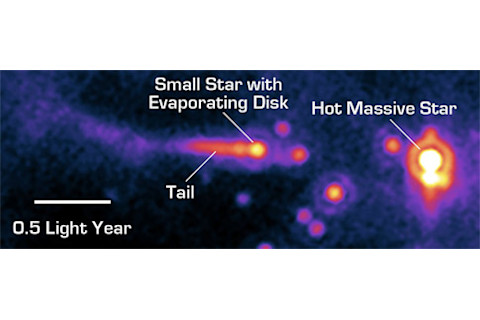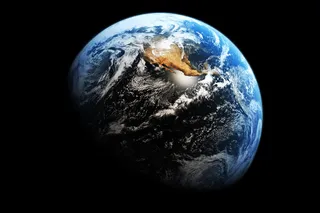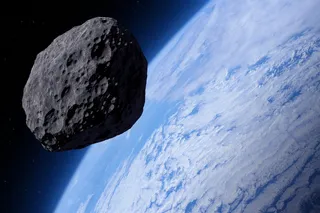
Wanna form planets? Stay the heck away from O stars. These are the most massive stars, ones with roughly 20 or more times the Sun's mass. The amount of energy a star generates -- and therefore how hot and bright it is -- is very sensitive to the mass. Luminosity goes as the mass^3.5, so doubling a star's mass doesn't double its brightness, it makes it go up by a factor of 2^3.5 = 11.3 or so. An O star with 50 times the Sun's mass will give off nearly one million times as much energy as the Sun! Obviously, being too close to something like that would, not to put too fine a point on it, suck. Happily, massive stars are a lot less common than stars like the Sun. And they don't live as long, making them less of a threat to other stars. But, they do form along with other stars in gas clouds, and in those neighborhoods things get pretty tough if you're not one of the big boys. As told in a new press release, a team of astronomers led by Zoltan Balog (making him the second astronomer I know of named Zoltan) have used the Spitzer Space Telescope to see this for themselves. They initially used the telescope to look for newly formed stars near O stars. When stars form, they usually have a disk of material surrounding them. They figured that looking at young stars near O stars, they would see lots of new stars that should have disks but didn't, because the O stars would have blown them away. But when they looked at the newly born star cluster IC 1396, what they actually found -- shown in the image at the top of the entry -- was a star still in the process of losing its disk. Most likely, the star in the image formed far enough from the O star to survive, but wandered too close. Now the fierce energy from the massive star is literally evaporating the disk away. You can see the comet-like gas and dust shooting straight away from the massive star. In this particular case, they found that stars more than about 10 trillion miles (1.6 light years) away from the O star tend to keep their disks, but stars closer in tend to lose them. So we seem to have a cosmic quarantine zone; if you step over the line, you takes your chances. Funny, there's one thing the press release didn't mention: in a million years or so that O star will explode. When it goes supernova, anything within a much greater radius will get slammed. It's hard to know just how far away you can be from a supernova and still survive (hmmm, that could be a really cool chapter in an upcoming book, I bet) but it's safe to say that the clock is ticking for any star in that cluster.













